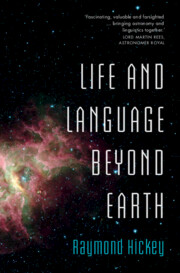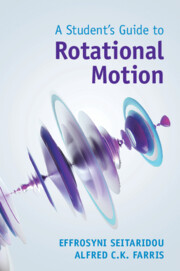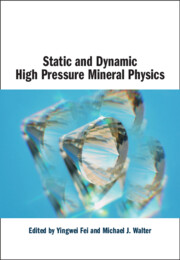Refine listing
Actions for selected content:
16950 results
Contents
-
- Book:
- Life and Language Beyond Earth
- Published online:
- 16 September 2023
- Print publication:
- 21 September 2023, pp v-xiv
-
- Chapter
- Export citation
5 - Star Formation and Planets
- from Part II - The Universe We Live In
-
- Book:
- Life and Language Beyond Earth
- Published online:
- 16 September 2023
- Print publication:
- 21 September 2023, pp 58-68
-
- Chapter
- Export citation

Life and Language Beyond Earth
-
- Published online:
- 16 September 2023
- Print publication:
- 21 September 2023

A Student's Guide to Rotational Motion
-
- Published online:
- 07 August 2023
- Print publication:
- 03 August 2023
-
- Textbook
- Export citation

Static and Dynamic High Pressure Mineral Physics
-
- Published online:
- 03 August 2023
- Print publication:
- 24 November 2022
Preface
-
- Book:
- A Student's Guide to Rotational Motion
- Published online:
- 07 August 2023
- Print publication:
- 03 August 2023, pp ix-x
-
- Chapter
- Export citation
3 - Rotational Dynamics
-
- Book:
- A Student's Guide to Rotational Motion
- Published online:
- 07 August 2023
- Print publication:
- 03 August 2023, pp 54-71
-
- Chapter
- Export citation
5 - Angular Momentum
-
- Book:
- A Student's Guide to Rotational Motion
- Published online:
- 07 August 2023
- Print publication:
- 03 August 2023, pp 90-109
-
- Chapter
- Export citation
Copyright page
-
- Book:
- A Student's Guide to Rotational Motion
- Published online:
- 07 August 2023
- Print publication:
- 03 August 2023, pp iv-iv
-
- Chapter
- Export citation
Index
-
- Book:
- A Student's Guide to Rotational Motion
- Published online:
- 07 August 2023
- Print publication:
- 03 August 2023, pp 169-171
-
- Chapter
- Export citation
2 - Torque and Static Equilibrium
-
- Book:
- A Student's Guide to Rotational Motion
- Published online:
- 07 August 2023
- Print publication:
- 03 August 2023, pp 25-53
-
- Chapter
- Export citation
Further Reading
-
- Book:
- A Student's Guide to Rotational Motion
- Published online:
- 07 August 2023
- Print publication:
- 03 August 2023, pp 168-168
-
- Chapter
- Export citation
7 - Combining Translation and Rotation
-
- Book:
- A Student's Guide to Rotational Motion
- Published online:
- 07 August 2023
- Print publication:
- 03 August 2023, pp 133-156
-
- Chapter
- Export citation
About this book
-
- Book:
- A Student's Guide to Rotational Motion
- Published online:
- 07 August 2023
- Print publication:
- 03 August 2023, pp v-vi
-
- Chapter
- Export citation
6 - Work and Energy
-
- Book:
- A Student's Guide to Rotational Motion
- Published online:
- 07 August 2023
- Print publication:
- 03 August 2023, pp 110-132
-
- Chapter
- Export citation
Contents
-
- Book:
- A Student's Guide to Rotational Motion
- Published online:
- 07 August 2023
- Print publication:
- 03 August 2023, pp vii-viii
-
- Chapter
- Export citation
1 - Rotational Kinematics
-
- Book:
- A Student's Guide to Rotational Motion
- Published online:
- 07 August 2023
- Print publication:
- 03 August 2023, pp 1-24
-
- Chapter
- Export citation
8 - Garden of Delights
-
- Book:
- A Student's Guide to Rotational Motion
- Published online:
- 07 August 2023
- Print publication:
- 03 August 2023, pp 157-167
-
- Chapter
- Export citation
4 - Moment of Inertia
-
- Book:
- A Student's Guide to Rotational Motion
- Published online:
- 07 August 2023
- Print publication:
- 03 August 2023, pp 72-89
-
- Chapter
- Export citation
7 - Cosmology and the Big Bang
-
- Book:
- Einstein's General Theory of Relativity
- Published online:
- 15 June 2023
- Print publication:
- 29 June 2023, pp 139-176
-
- Chapter
- Export citation
